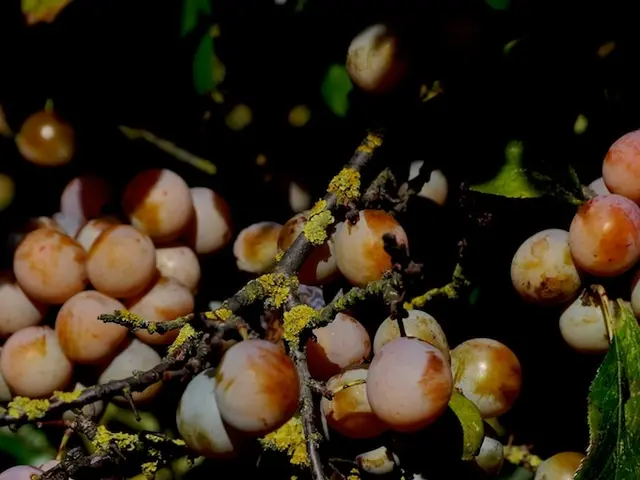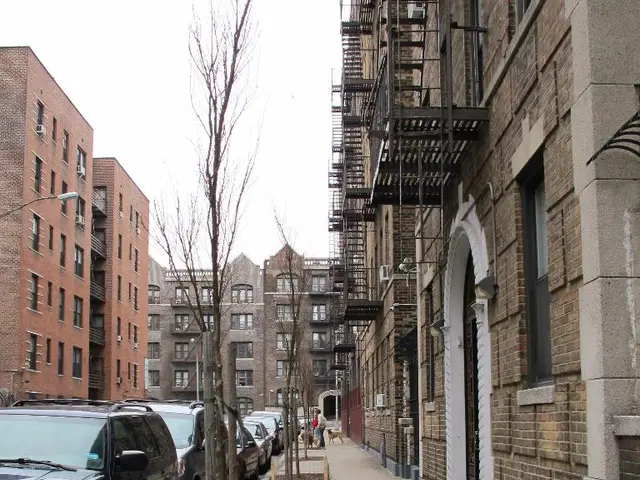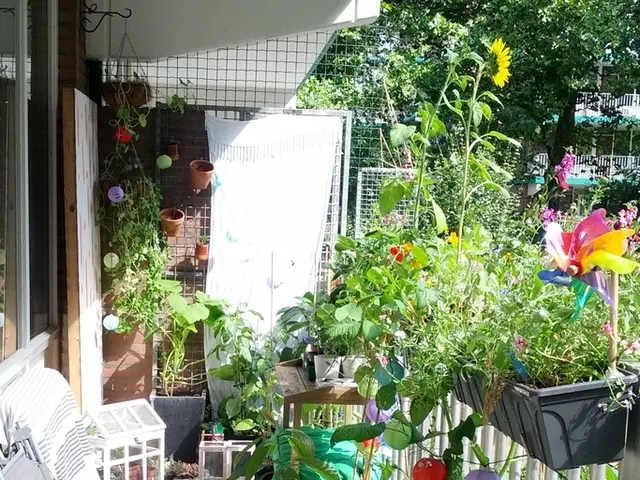Methods for Pre-Germinating Seeds Before Sowing Them in Soil
Seed Boost: Levelling Up Your Planting Process with Soaking or Sprouting Seeds.
While it's not always necessary, soaking or sprouting seeds can give your garden a serious upgrade. Let's dive into this nifty technique for a greener thumb.
Waking the Seeds Up: Soaking vs Sprouting
Soaking seeds involves drenching them in water to hydrate their slumber. It awakens the seeds and kickstarts the germination process. Larger seeds, such as peas, beans, cucumbers, and squash, are perfect for this method, which usually takes 8-12 hours in warm water.
However, smaller seeds like carrots can be tricky—wet seeds can be a handful! To make life easier, we recommend soaking larger carrot seeds in cornstarch before sowing.
Sprouting goes a step further than soaking, as the seeds come out of their shell, ready to germinate. A sprouter is a nifty gadget to help you with this. But if you don't have one, don't worry! You can use damp paper towels and a plate. Soak the seeds for half an hour, then scatter them on the towel, keeping it moist till the seeds sprout.
When seeds are sprouting, look out for tiny roots. This is the beginning of the growing journey, and once those roots appear, you're good to go.
Not All Seeds Are Created Equal: What to Sprout
You can sprout just about any seeds, provided that they're not too small to handle after sprouting. Bigger seeds, like the ones we mentioned earlier, are perfect for sprouting, and they usually do pretty well when planted directly.
Cucumber or pumpkin seeds should be sprouted for a short time since these varieties don't love having their roots messed with. As soon as the sprout appears, it's time to plant them. If you're planting in cooler weather, wait for the danger of frost to pass before planting cucurbit seeds.
Sprouting is also a fantastic way to test the germination rate of older seeds. Since you're not planting and hoping for the best, you can sprout them first and only plant the ones that come up. Labeling the sprouted seeds will help you keep track of them.
Timing Is Everything: How Long to Sprout Seeds
The length of time it takes to sprout seeds depends on the variety, quality, and ideal temperature. Most seeds can be sprouted at room temperature, but heat-loving plants like peppers, corn, cucumbers, and eggplants prefer a balmy 85°F (29°C). Make sure the seeds are moist and out of direct sunlight. Keep those seedlings closely monitored, as they can crop up faster than you'd expect.
For seeds planted directly into the garden, you'll want them to just show the sprout. This makes handling easier and reduces the risk of breaking off the new sprout.
For seedlings, like tomatoes or peppers, seeds can be left to sprout for a bit longer before planting. Just use a sprouter or the paper towel method, and keep them moist with a spray bottle. Find them a warm spot out of the sun, and once they've grown, carefully lift each seedling with the root and plant it in a pot.
If you're not into the nitty-gritty of tiny seeds, you can still sprout them—just plant them before they've grown a root. Planting a rooted seedling merely speeds up the germination process; it's all optional—do what works best for you.
Time to Plant: Seeds Soaked or Sprouted
With the exception of the specific example given earlier, soaked or sprouted seeds are pretty similar to regular seeds. Dry seeds still have a protective coating that's broken by soaking or sprouting, so handle them with care and make sure they stay moist.
Prepare the planting site before bringing the seeds out and have water at the ready to water them immediately. Ideally, plant the seeds in moist soil about three times their size deep, lightly cover them, and water them well. Keep them moist if the weather's dry to prevent new growth from drying out.
What about your experience with soaking or sprouting seeds? Share your stories with us!
Don't miss out! Follow us on Instagram, Facebook, or Pinterest for the latest updates.
More Planting Posts You Might Enjoy
Transplanting Tomato Plants into the Ground
Hardening off Seedlings the Easy Way
How to Transplant Seedlings into the Garden
[Custom Title] Depending on the specific input, replace "How to Soak or Sprout Seeds Before Planting" with the relevant title if one is provided.
Northern Vegetable Garden Planting Schedule
Starting Vegetable Seeds Indoors
When and How to Start Tomato Seeds Indoors
Winter Sowing Seeds in a Cold Climate (Zone 3)
Spring Indoor Seed-Starting Schedule – Free Printable
Organizing and Storing Seeds
- Suited for colder climates, sprouting certain seeds like peas, beans, cucumbers, and squash can be advantageous when planting in the garden, as it kickstarts the germination process and may improve the seed quality.
- For a tasty and green lifestyle, cooking sprouted seeds can be an excellent addition to your food-and-drink menu, as they provide extra nutritional benefits compared to regular seeds when consumed in salads, sandwiches, or smoothies.
- Incorporating gardening into your home-and-garden projects can create a healthy and aesthetically pleasing environment when you sprout, plant, and nurture your own seeds.
- Another purpose for sprouting seeds, besides planting, is testing the germination rate of older seeds, as it allows you to sprout them first and only plant the ones with strong sprouts to improve the success rate of your garden.
- For avid gardeners, there are countless recipes and techniques available online, such as home-and-garden blogs and magazines, which offer advice on how to soak or sprout seeds, types of seeds to sprout, and timeframes for sprouting based on the seed variety and ideal temperature.







